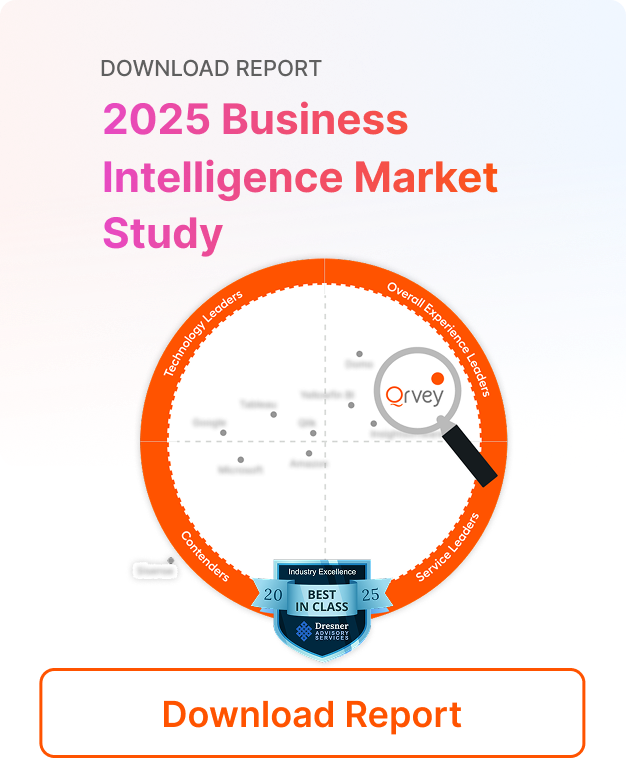
Key Takeaways
- Embedded AI seamlessly integrates artificial intelligence into SaaS platforms, enabling real-time data analysis and smarter decision-making directly within business workflows.
- It automates repetitive tasks, personalizes user experiences, and democratizes access to advanced analytics for non-technical users.
- Companies adopting embedded AI benefit from increased operational efficiency, deeper insights, and faster innovation.
- Successful implementation requires careful planning, platform selection, and ongoing optimization to maximize ROI.
- Embedded AI is rapidly transforming industries, making data-driven strategies accessible to organizations of all sizes.
Unlocking actionable insights from SaaS data is a challenge for many organizations. Embedded AI offers a solution by integrating intelligent automation directly into business workflows. This article explains what embedded AI is, how it works, and how you can leverage it to automate analysis, boost productivity, and empower every user—no technical expertise required.
What Is Embedded AI: At a Glance
Embedded AI refers to artificial intelligence features built directly into software applications, working seamlessly within business workflows. Often paired with embedded analytics, it enables real-time data processing and intelligent automation, delivering actionable insights and smart recommendations inside SaaS platforms—without the need for separate embedded analytics tools or technical expertise.
How Embedded AI Works In More Detail
Embedded AI operates through a series of integrated steps within SaaS platforms. It begins with data ingestion, collecting and organizing information from various sources. Next, machine learning models analyze this data to detect patterns and generate insights. Finally, the system automates decision-making and workflow actions, delivering real-time recommendations and streamlining business processes—all seamlessly within the application.
Step #1 Data Ingestion
Embedded AI begins with robust data ingestion, which involves collecting and organizing information from a wide variety of sources within the SaaS platform—such as user interactions, transactional records, external APIs, and sensor data. This step is critical because the quality and diversity of the data directly impact the effectiveness of AI-driven insights. By automating this process, embedded AI lays a strong foundation for reliable and actionable intelligence.
Step #2 Machine Learning Analysis
Once the data is ingested and pre-processed, embedded AI leverages advanced machine learning models to analyze the information. These models are designed to detect patterns, identify anomalies, and predict future outcomes based on historical and real-time data. The analysis happens within the application’s interface, allowing users to access insights instantly without switching tools or requiring technical expertise.
Step #3 Automated Decision-Making
The final stage of embedded AI is automated decision-making, where the system uses the insights generated by machine learning to trigger workflow actions. This can include sending alerts, updating dashboards, recommending next steps, or even executing predefined tasks—all without manual intervention. Automation ensures that responses are timely and relevant, making the platform smarter and more responsive to changing business needs.
Traditional Data vs. Embedded AI
Traditional data analysis typically involves exporting raw information from various systems, manually cleaning and preparing it, and then using separate self service analytics tools to generate reports. This process is often time-consuming, requires technical expertise, and can result in delays before actionable insights are available.
In contrast, embedded AI—often paired with embedded analytics—integrates intelligent data processing directly within SaaS platforms. This means users can access real-time insights, automated recommendations, and interactive dashboards without leaving the application or relying on IT specialists. Together, embedded AI and embedded analytics transform data from a static resource into a dynamic driver of business decisions, empowering users to act quickly and confidently.
Examples & Use Cases of Embedded AI in Action
Embedded AI is rapidly transforming how organizations operate by bringing intelligence directly into the tools and workflows people use every day. By combining embedded AI with embedded analytics, businesses can automate complex processes, personalize user experiences, and unlock new opportunities for growth. Below are several real-world examples and use cases that demonstrate how embedded AI and embedded analytics work together to drive efficiency, enhance decision-making, and create more intelligent, responsive business systems across industries.
Example #1 Enterprise SaaS Analytics
Platforms like Qrvey offer embedded AI as part of their OEM embedded analytics solution for SaaS companies. SaaS companies integrate embedded AI functionality into their own product(s) to enable their end users to have conversations with real-time analytics and even ask AI to create personalized dashboards. Users can instantly visualize trends, receive automated insights, and make data-driven decisions without relying on IT or data specialists. This empowers teams to act quickly and confidently, improving overall business agility.
Example #2 Healthcare Applications
Embedded AI is used in healthcare analytics software to automate patient risk assessments, predict disease outbreaks, and streamline administrative tasks. By integrating AI-driven analytics, providers can identify high-risk patients, optimize treatment plans, and improve outcomes—all within their existing workflow.
Example #3 E-commerce Optimization
Online retailers use embedded AI to forecast demand, personalize product recommendations, and manage inventory in real time. Embedded analytics dashboards help managers track sales performance, spot emerging trends, and respond proactively to market changes.
Example #4 Financial Services
Banks and fintech companies deploy embedded AI to detect fraudulent transactions, automate compliance checks, and provide personalized financial advice. Embedded analytics tools allow users to monitor account activity, analyze spending patterns, and receive alerts for unusual behavior.
Example #5 Manufacturing & IoT
Embedded AI powers predictive maintenance and quality control in manufacturing environments. By analyzing sensor data in real time, embedded analytics can identify equipment issues before they cause downtime, optimize production schedules, and reduce operational costs.
Essential Elements of Embedded AI Systems
Embedded AI systems are built on a foundation of advanced hardware and software components that work together to deliver intelligent automation and real-time insights within SaaS platforms. These elements are important for enabling features like embedded reporting and enhancing business intelligence capabilities.
Element #1 Processors and Accelerators
At the heart of every embedded AI system are powerful processors and specialized accelerators, such as GPUs or TPUs. These components handle the intensive computations required for machine learning and deep learning tasks, enabling rapid data processing and analysis directly within the application.
Element #2 AI Models
Embedded AI relies on sophisticated machine learning models that are trained to recognize patterns, make predictions, and automate decisions. These models can range from simple regression algorithms to complex neural networks, depending on the use case and data complexity. Continuous learning and model updates ensure that the AI remains accurate and relevant over time.
Element #3 Memory and Storage
Efficient memory management is crucial for embedded AI systems, as it allows for the quick retrieval and processing of large datasets. High-speed storage solutions ensure that data is readily available for analysis, supporting real-time operations and minimizing latency.
Element #4 Real-Time Processing
One of the defining features of embedded AI is its ability to process data and deliver insights instantly. Real-time processing enables applications to respond to user actions, environmental changes, or business events as they happen, driving agility and responsiveness.
Element #5 Secure Data Handling
Security is paramount in embedded AI systems. Robust encryption, access controls, and compliance with data privacy regulations protect sensitive information throughout the data lifecycle, from ingestion to analysis and storage
Element #6 Scalable Architecture
As business needs evolve, embedded AI systems must be able to scale efficiently. Modular design and cloud-native infrastructure allow organizations to expand capabilities, integrate new data sources, and support growing user bases without compromising performance.
6 Benefits of Using Embedded AI for Businesses
Embedded AI is revolutionizing how organizations operate by automating processes, enhancing analytics, and empowering users. Here are some of the most impactful benefits businesses can realize by adopting embedded AI:
1. Increased Operational Efficiency
By automating repetitive tasks and streamlining workflows, embedded AI frees up valuable time for employees to focus on strategic initiatives. Routine processes such as data entry, report generation, and monitoring can be handled automatically, reducing human error and accelerating business operations. This efficiency translates into cost savings and improved productivity across the organization.
2. Real-Time, Actionable Insights
Embedded AI enables businesses to access real-time analytics and insights directly within their SaaS platforms. Instead of waiting for manual reports or batch processing, users receive instant feedback and recommendations as they interact with the application. This empowers teams to make faster, data-driven decisions and respond proactively to changing market conditions.
3. Enhanced Personalization
With embedded AI, applications can tailor experiences to individual users by analyzing behavior, preferences, and historical data. Personalized dashboards, targeted recommendations, and adaptive interfaces help boost user engagement and satisfaction. This level of customization not only improves the user experience but also drives higher adoption rates and loyalty.
4. Democratized Data Access
Embedded AI, combined with embedded analytics, makes advanced data analysis accessible to non-technical users. Natural language processing and intuitive dashboards allow anyone in the organization to explore data, generate reports, and uncover insights without needing specialized skills. This democratization of data empowers more employees to contribute to business growth and innovation.
5. Scalable and Secure Solutions
Modern embedded AI systems are designed to scale with business needs, supporting growing datasets and user bases without sacrificing performance. Built-in security features such as encryption and access controls ensure that sensitive information is protected throughout the data lifecycle. As organizations expand, embedded AI continues to deliver reliable and secure analytics.
6. Competitive Advantage
Organizations that leverage embedded AI gain a significant edge over competitors by making smarter decisions, optimizing operations, and innovating faster. The ability to harness real-time data and automate complex processes positions businesses to adapt quickly and seize new opportunities in their industry.
How AI Simplifies Data Access to Non-technical Users
Artificial intelligence is transforming the way non-technical users interact with data, making advanced analytics and insights accessible to everyone in an organization. Traditionally, accessing and analyzing business data required specialized skills, such as writing SQL queries or navigating complex reporting tools. This created bottlenecks, as only a handful of experts could unlock valuable information, leaving most employees dependent on IT or data teams.
Comparing NLP and Traditional Data Query Methods
Embedded AI changes this dynamic by integrating intuitive, user-friendly features directly into SaaS platforms. With natural language processing (NLP), users can simply type or speak questions—like “What were last quarter’s sales trends?”—and receive instant, actionable answers. AI-powered dashboards automatically visualize data, highlight key metrics, and suggest relevant insights, all without the need for technical expertise.
Furthermore, embedded analytics tools powered by AI allow users to customize reports, set up alerts, and explore data interactively. By removing barriers to data exploration, AI fosters a culture of innovation and agility, helping organizations stay competitive in a fast-paced environment.
How AI Simplifies Enterprise Data Access to Non-technical Users
AI is revolutionizing enterprise data access by removing technical barriers and making information available to everyone, regardless of their background. In large organizations, data is often scattered across multiple systems and departments, making it difficult for non-technical users to find and use the insights they need. Embedded AI solves this challenge by integrating intelligent search, natural language processing, and automated analytics directly into enterprise dashboards and workflows.
With these capabilities, employees can ask questions in plain language, generate custom reports, and visualize complex datasets instantly—without relying on IT or data specialists. For example, platforms like Qrvey incorporate advanced AI to personalize dashboards, automate routine analysis, and deliver relevant insights tailored to each user’s role and needs. This empowers teams to make faster, more informed decisions, collaborate more effectively, and drive innovation across the organization.
By simplifying access to enterprise data, AI helps businesses unlock the full value of their information assets, foster a data-driven culture, and stay competitive in a rapidly evolving market.
Steps to Integrate Embedded AI Into Your Systems
Successfully integrating embedded AI into your SaaS platform or enterprise workflows requires a strategic, step-by-step approach. Here’s how organizations can ensure a smooth and effective implementation.
Step #1 Assess Business Needs and Objectives
Begin by identifying the specific business challenges and goals that embedded AI can address. Engage stakeholders across departments to understand pain points, desired outcomes, and opportunities for automation or enhanced analytics.
Step #2 Select the Right Platform and Tools
Choose a platform that offers robust embedded AI capabilities, scalability, and seamless integration with your existing systems. Solutions like Qrvey provide flexible analytics, embedded reporting, and advanced AI features tailored for SaaS environments.
Step #3 Prepare and Cleanse Your Data
High-quality data is essential for effective AI. Gather relevant datasets from across your organization, then clean, validate, and organize them to ensure accuracy and consistency. This step lays the foundation for reliable AI-driven insights.
Step #4 Deploy and Train AI Models
Integrate machine learning models into your workflows, customizing them to fit your business context. Train these models using historical and real-time data, and validate their performance to ensure they deliver actionable results.
Step #5 Integrate AI with Existing Workflows
Embed AI-powered analytics, reporting, and automation features directly into your SaaS platform or enterprise dashboards. Ensure that these tools are accessible to both technical and non-technical users, supporting a wide range of use cases.
Step #6 Monitor, Optimize, and Scale
Continuously monitor AI performance, gather user feedback, and refine models as needed. As your business grows, scale your embedded AI solutions to handle increased data volumes and user demands, ensuring ongoing value and innovation.
Step #7 Provide Training and Support
Educate users on how to leverage embedded AI features, offering training resources and support to maximize adoption and impact. Encourage a data-driven culture where employees feel empowered to use AI tools confidently.
5 Challenges of Embedded AI and Strategies to Overcome
While embedded AI offers transformative benefits, organizations often face several challenges during implementation and ongoing use. Understanding these obstacles—and how to address them—can help ensure a successful AI adoption.
1. Complex Setup and Integration
Integrating embedded AI into existing systems can be technically demanding, especially when dealing with legacy infrastructure or fragmented data sources. To overcome this, choose platforms like Qrvey that offer guided onboarding, robust APIs, and modular architectures. Collaborate closely with IT and business stakeholders to map out integration steps and minimize disruption.
2. Data Quality and Consistency
AI models rely on high-quality, consistent data to deliver accurate insights. Poor data hygiene can lead to unreliable results and missed opportunities. Implement strong data governance practices, including regular validation, cleaning, and monitoring. Use automated tools to detect anomalies and maintain data integrity throughout the lifecycle.
3. User Adoption and Training
Non-technical users may be hesitant to embrace new AI-powered tools, fearing complexity or lack of control. Address this by providing comprehensive training, intuitive interfaces, and ongoing support. Highlight the benefits of embedded AI—such as time savings and improved decision-making—to encourage adoption and build confidence.
4. Security and Privacy Concerns
Handling sensitive business data with embedded AI raises important security and privacy considerations. Ensure your platform complies with relevant regulations, employs robust encryption, and enforces strict access controls. Regularly audit systems for vulnerabilities and educate users on best practices for data protection.
5. Scalability and Performance
As your organization grows, embedded AI solutions must scale efficiently to handle increasing data volumes and user demands. Opt for cloud-native, modular architectures that support seamless expansion. Continuously monitor performance and optimize models to maintain speed and reliability.
Pro Tip: Whenever you encounter a challenge, look for platforms that offer built-in solutions, strong support, and flexible customization options. Qrvey, for example, provides resources and features designed to address common obstacles in embedded AI adoption
Future Landscape of Embedded AI
The future of embedded AI promises to reshape how businesses operate, innovate, and compete. As technology advances, embedded AI will become even more deeply integrated into SaaS platforms and enterprise workflows, driving smarter automation and more personalized experiences.
Prediction #1 Edge Computing
One major trend is the rise of edge computing, where AI models run directly on devices rather than relying solely on cloud infrastructure. This enables real-time analytics, faster decision-making, and reduced latency, especially for industries like manufacturing, healthcare, and logistics.
Prediction #2 Federated Learning
Federated learning is another emerging development, allowing AI models to be trained across distributed datasets without compromising privacy. This approach enhances data security and compliance, making it easier for organizations to collaborate and share insights while protecting sensitive information.
Prediction #3 Personalized Automation
Personalized automation will continue to evolve, with embedded AI tailoring workflows, recommendations, and dashboards to individual users based on their roles, preferences, and behavior. This level of customization will boost productivity, engagement, and satisfaction across the workforce.
Prediction #4 Democratize Data Access Further
AI-driven platforms will also democratize data access further, empowering employees at every level to leverage advanced analytics and make informed decisions independently. As embedded AI becomes more intuitive and accessible, organizations will foster a truly data-driven culture.
Looking ahead, businesses that embrace embedded AI will gain a significant competitive advantage, adapting quickly to market changes, uncovering new opportunities, and driving continuous innovation. The landscape will be defined by smarter, more agile organizations that use embedded AI to unlock the full potential of their data.
Build Smarter Data Workflows with Qrvey
Transforming your organization’s data workflows starts with choosing the right platform. Qrvey empowers businesses to harness the full potential of embedded AI and analytics, making it easy to automate processes, visualize data, and deliver actionable insights to every user—regardless of technical skill. With Qrvey, you can integrate advanced AI features directly into your SaaS applications, enabling real-time reporting, personalized dashboards, and seamless data access.
Qrvey’s flexible architecture supports scalable growth, robust security, and intuitive user experiences. Whether you’re looking to streamline operations, improve decision-making, or foster a data-driven culture, Qrvey provides the tools and support needed to build smarter, more efficient workflows. Take the next step by exploring Qrvey’s embedded analytics platform and discover how you can unlock new opportunities for innovation and business success.

Arman Eshraghi is the CEO and founder of Qrvey, the leading embedded analytics solution for SaaS companies. With over 25 years of experience in data analytics and software development, Arman has a deep passion for empowering businesses to unlock the full potential of their data.
His extensive expertise in data architecture, machine learning, and cloud computing has been instrumental in shaping Qrvey’s innovative approach to embedded analytics. As the driving force behind Qrvey, Arman is committed to revolutionizing the way SaaS companies deliver data-driven experiences to their customers. With a keen understanding of the unique challenges faced by SaaS businesses, he has led the development of a platform that seamlessly integrates advanced analytics capabilities into software applications, enabling companies to provide valuable insights and drive growth.
Popular Posts
Why is Multi-Tenant Analytics So Hard?
BLOG
Creating performant, secure, and scalable multi-tenant analytics requires overcoming steep engineering challenges that stretch the limits of...
How We Define Embedded Analytics
BLOG
Embedded analytics comes in many forms, but at Qrvey we focus exclusively on embedded analytics for SaaS applications. Discover the differences here...
White Labeling Your Analytics for Success
BLOG
When using third party analytics software you want it to blend in seamlessly to your application. Learn more on how and why this is important for user experience.








